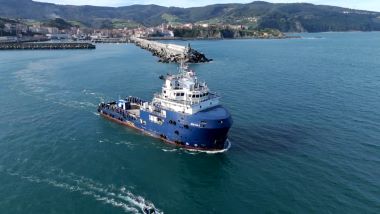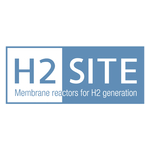
H2SITE Commissions First On-Board Ammonia Cracking System Generating High-Purity Hydrogen Coupled with PEM Fuel Cell
- Maritime transport represents 2% of the global greenhouse gas emissions. Ammonia and methanol are the most promising carriers being explored for its decarbonization.
- H2SITE has produced pure hydrogen from ammonia on board, through a process called “Ammonia cracking”, using its integrated membrane reactor technology. Connected to a PEM fuel cell, hydrogen is used to produce electricity for the ship’s auxiliary consumption.
- After proving its integrated membrane reactor technology in onboarded and inland applications, H2SITE continues to scale up its technology proving higher efficiency levels.
BILBAO,Spain–(BUSINESS WIRE)–H2SITE has successfully validated the first ammonia cracker to produce high-purity hydrogen for onboard power generation using a PEM fuel cell. An integrated membrane reactor has been installed and operated on board of the BERTHA B supply ship, sailing the shores of the Gulf of Biscay.
Maritime transport is responsible for 2% of global greenhouse gas emissions, presenting significant potential for emission reduction by transitioning from hydrocarbons to green fuel options, such as hydrogen.
Ammonia cracking is gaining traction as a potential hydrogen carrier for onboard applications. It can be used directly in engines, or it can be cracked into hydrogen and used in fuel cells. Before hydrogen is used, purification is necessary, especially if traces of ammonia are present.
H2SITE’s membrane reactors make sure all the ammonia is transformed, while delivering a high purity hydrogen to the fuel cell in a single process step. During navigation, as part of the H2OCEAN project, H2SITE’s cracker has successfully powered the ship’s auxiliary services. This achievement was made possible thanks to the collaboration with players active in the maritime decarbonization segment such as Zumaia Offshore, Erhardt Offshore, Ajusa, and TECNALIA, along with the participation of Enagas and ABS.
“Our innovative membrane reactor technology not only brings an improvement in system efficiency but also reduces the footprint of the installation. This is especially important in applications where space is limited, such as onboard a vessel.”. to Jose Medrano, Technical Director atH2SITE. “We have focused our design efforts on minimizing the ammonia consumption, which will be key for the scale up to suit higher power output units ”.
This project is a steppingstone for H2SITE in the decarbonization of maritime transport.
About H2SITE:
H2SITE was established in 2020 and possesses exclusive technology for reactors and separators, facilitating the conversion of various feedstocks into hydrogen. These include ammonia, methanol, or synthetic gas, as well as the separation of hydrogen from gaseous mixtures in low concentrations for applications in salt caverns or geological hydrogen.
Contacts
For more information:
Andrés Galnares, CEO de H2SITE: andres.galnares@h2site.eu



